

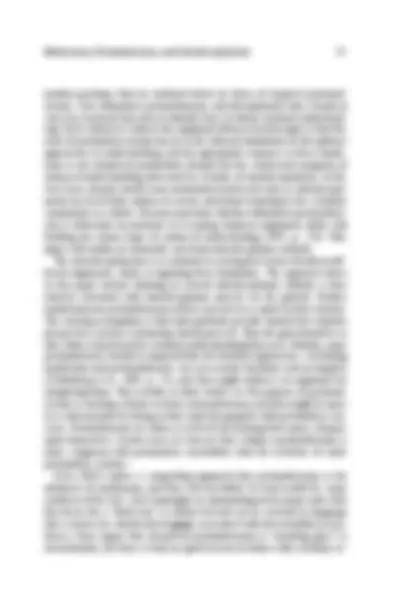
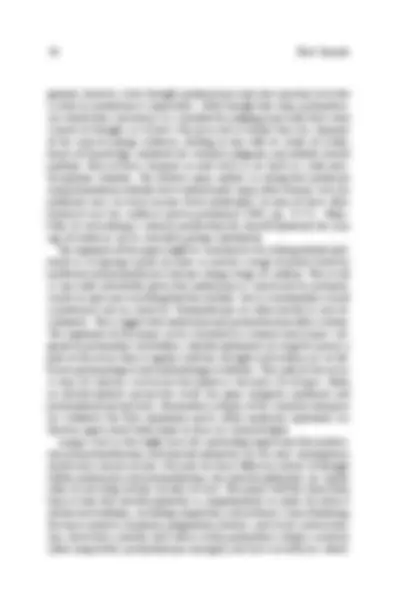
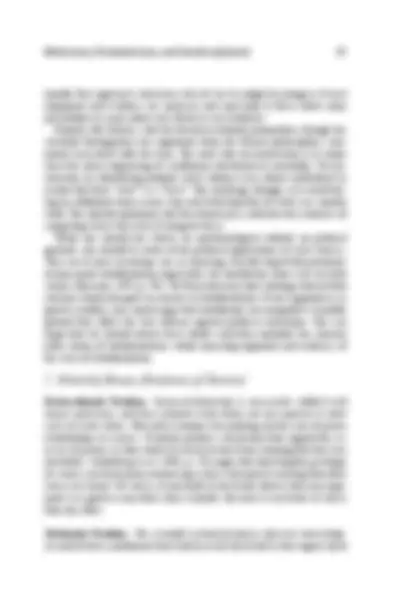
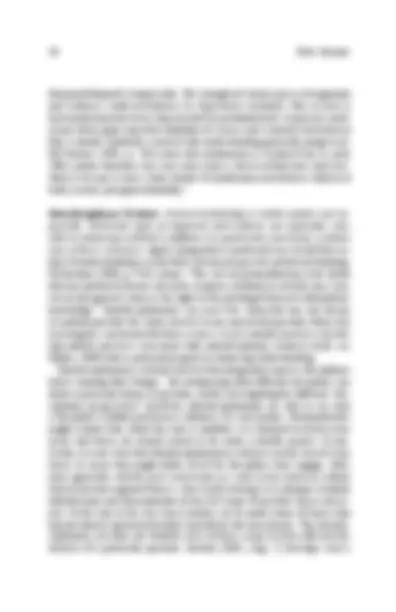
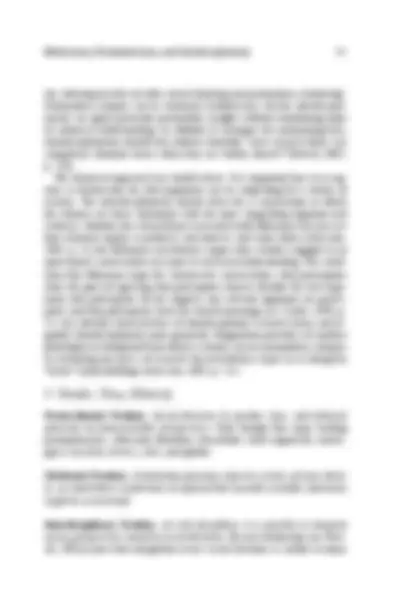
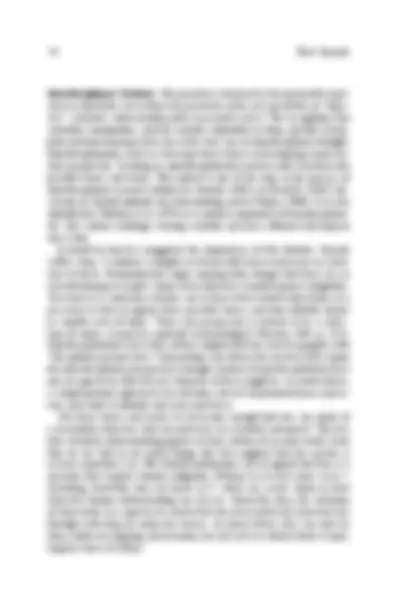
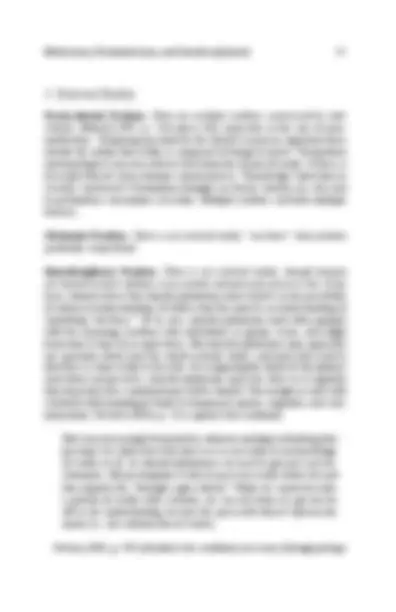
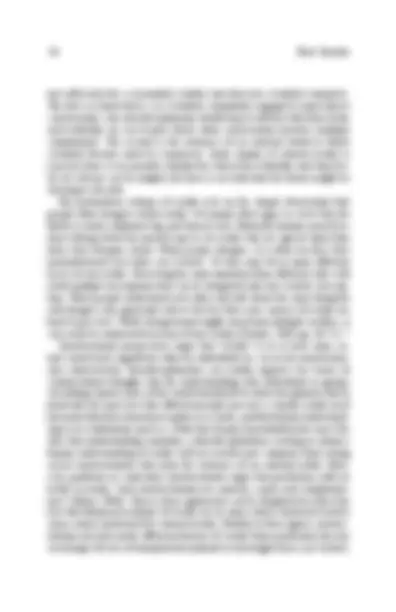
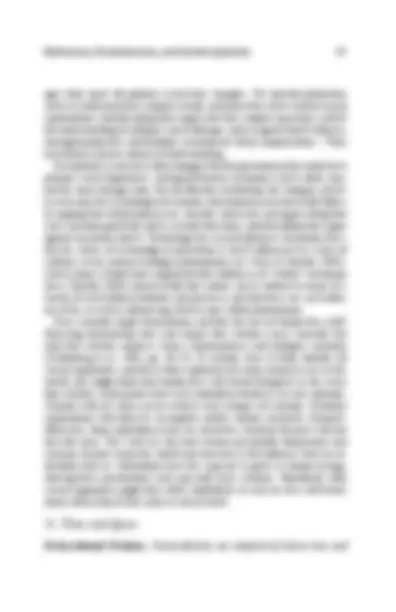
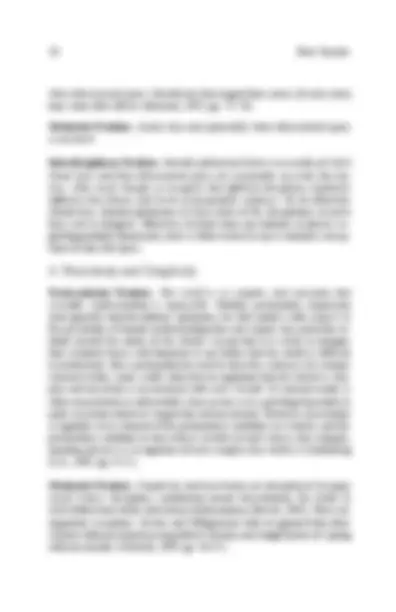
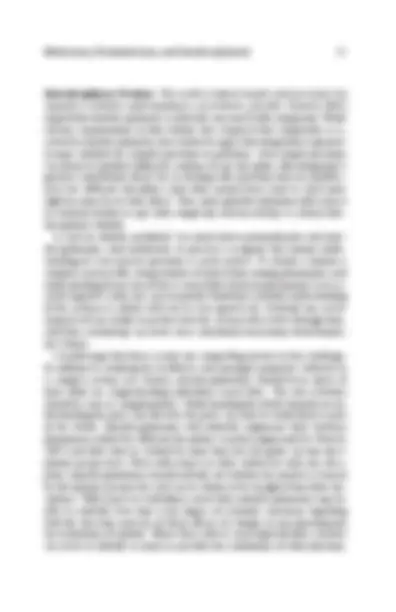
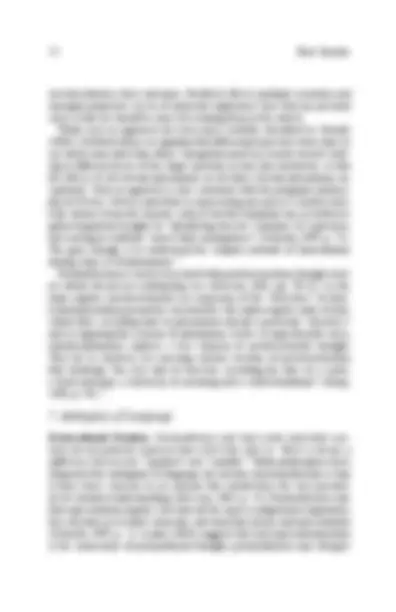
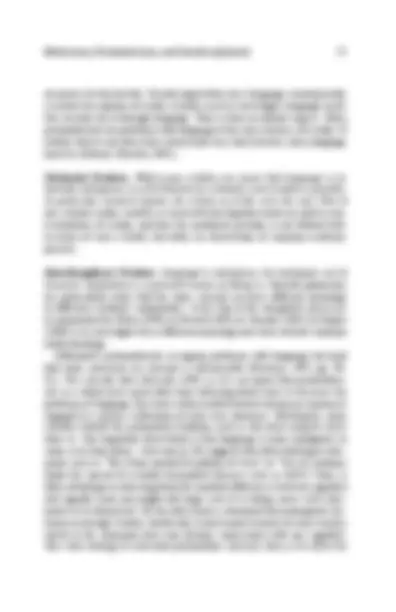
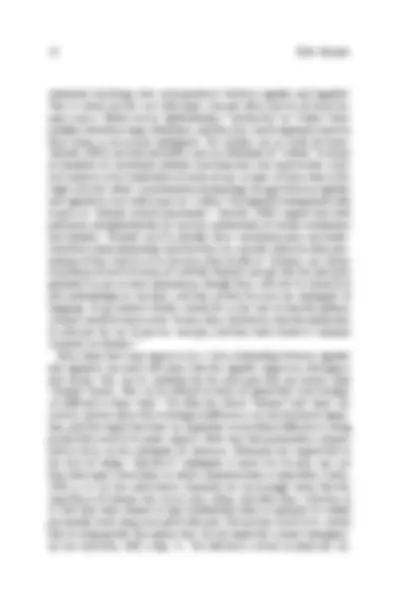

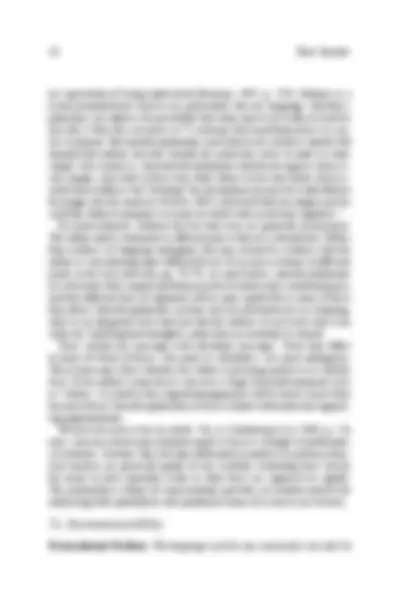



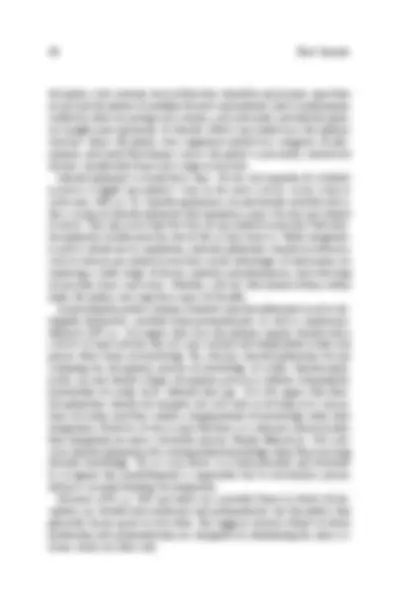

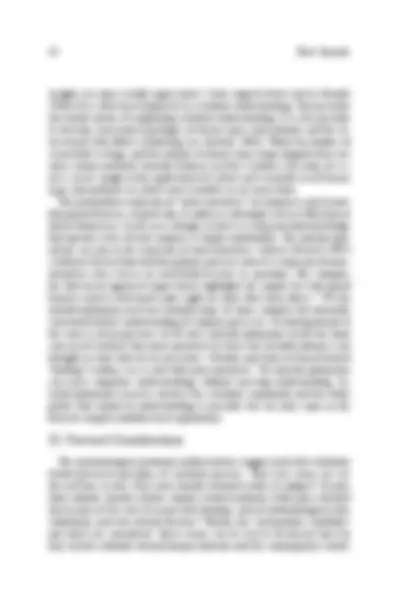

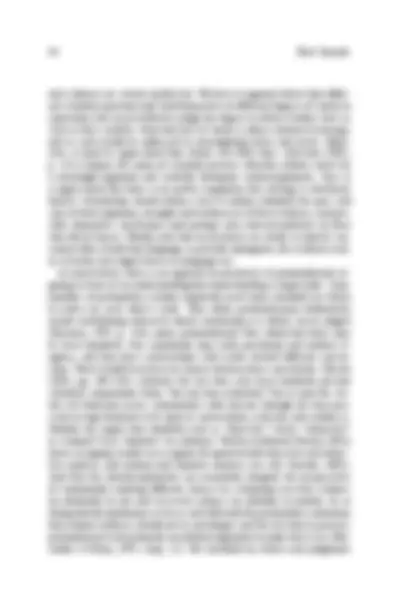
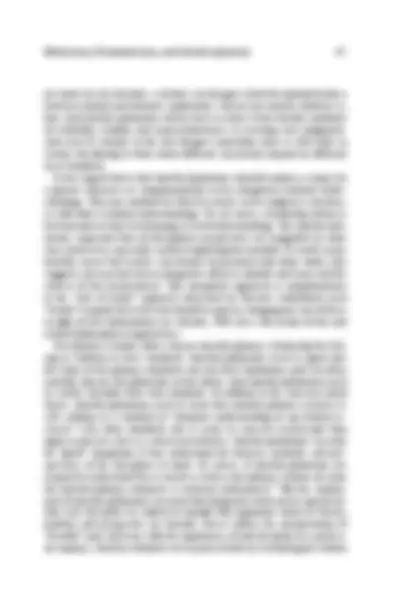
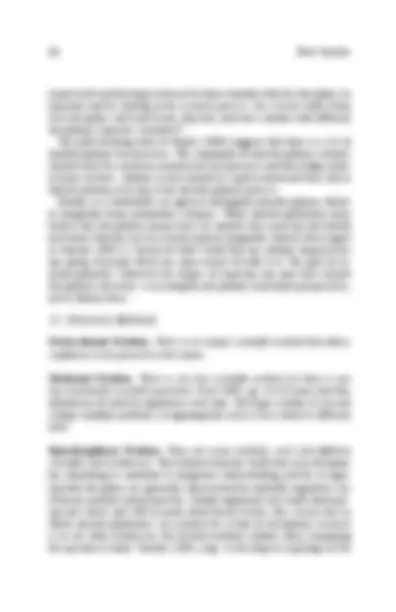
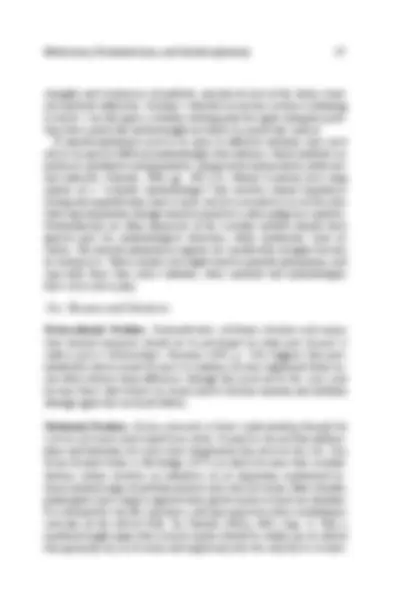
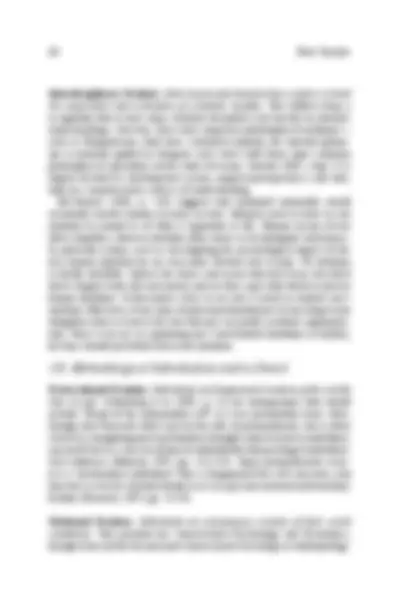

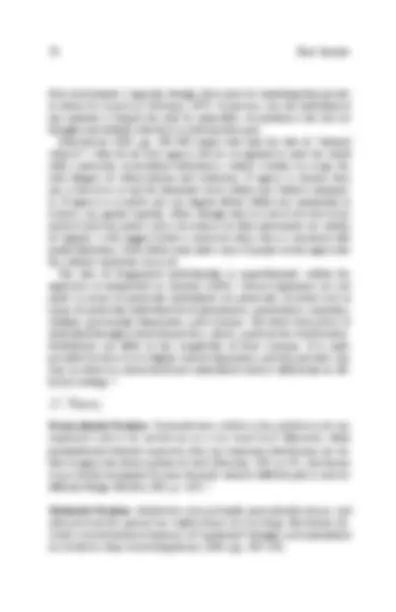

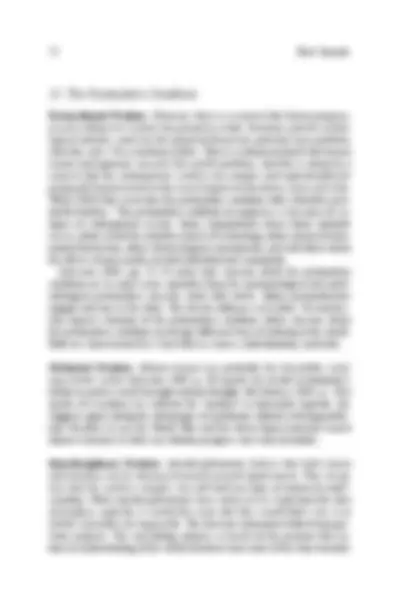
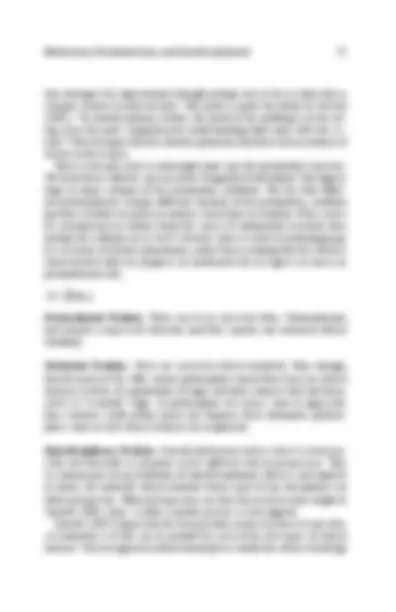
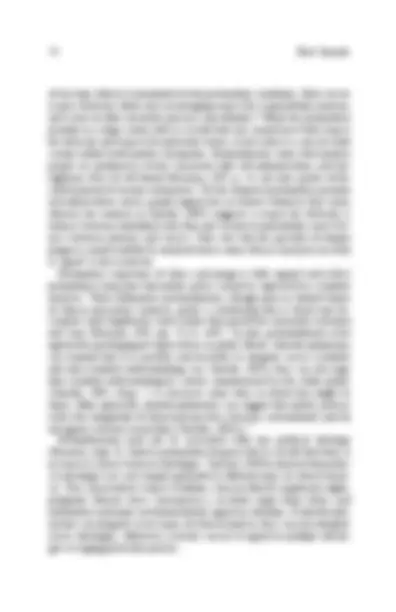

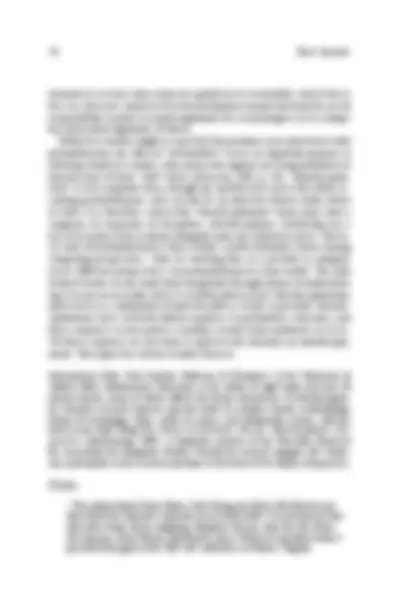




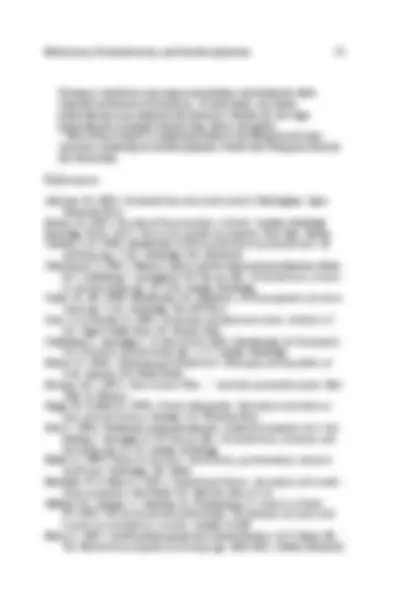
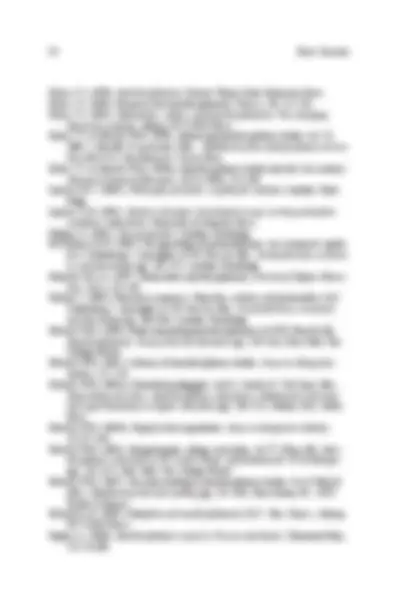
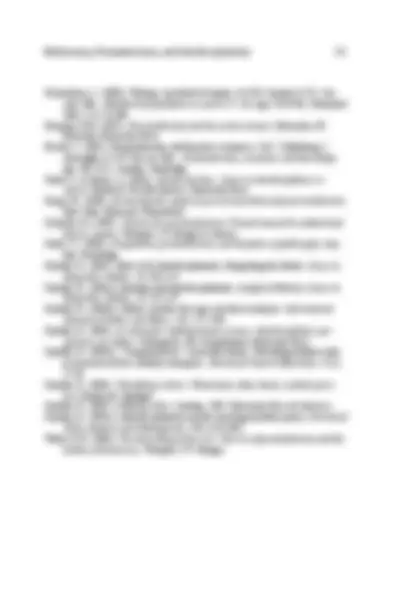


Study with the several resources on Docsity

Earn points by helping other students or get them with a premium plan


Prepare for your exams
Study with the several resources on Docsity

Earn points to download
Earn points by helping other students or get them with a premium plan
Community
Ask the community for help and clear up your study doubts
Discover the best universities in your country according to Docsity users
Free resources
Download our free guides on studying techniques, anxiety management strategies, and thesis advice from Docsity tutors
The relationship between modernism, postmodernism, and interdisciplinarity. It examines the particularities of modernist, postmodernist, and interdisciplinary theory and practice, and follows with observations regarding the ways in which, despite complementarities, the interdisciplinary position overcomes problems often associated with modernism and postmodernism. The paper compares and contrasts interdisciplinarity with both modernism and postmodernism. It also identifies a coherent justification for interdisciplinarity. useful for students studying interdisciplinary studies, philosophy, and cultural studies.
Typology: Summaries
1 / 52

This page cannot be seen from the preview
Don't miss anything!













































No. 25, pp. 32-83 (2007)
by
Rick Szostak
University of Alberta
Abstract: While postmodernist and modernist approaches to a range of epistemological and methodological issues are well established, there is less explicit attention given to the contri- bution of interdisciplinarity to these same questions. Through a comparison/contrast format, this paper will examine the particularities of modernist, postmodernist, and interdisciplin- ary theory and practice, and follow with observations regarding the ways in which, despite complementarities, the interdisciplinary position overcomes problems often associated with modernism and postmodernism. While in other arenas different aspects of these contested concepts might be explored, this study promotes inquiry that rigorously addresses how schol- arship can be advanced and how the academy can exercise its responsibility in the public sphere.
This paper compares and contrasts interdisciplinarity with both modern- ism and postmodernism. Unfortunately, interdisciplinarity and postmod- ernism are often conflated since both exhibit some degree of skepticism toward the disciplinary structure of the academy. While postmodernist and modernist attitudes toward a range of epistemological and methodological issues are well established, such attitudes are often implicit at best in the practically-oriented literature on interdisciplinarity. Yet Newell (1998, p.
Modernism, Postmodernism, and Interdisciplinarity 33
and left-wing politics.” This paper will outline a consistent and distinct set of interdisciplinary attitudes toward epistemological and methodological questions. The structure of this paper is straightforward. After some opening re- marks, each substantive section begins with the statement of a modernist , postmodernist, and interdisciplinary position on a particular epistemologi- cal, theoretical, or methodological issue. What follows is a brief discussion of how the interdisciplinary position overcomes problems often associated with the modernist and postmodernist positions. Modernism and postmodernism are both contested concepts. It is not the purpose of this paper to seek an unattainably precise definition of these.^1 One barrier to such an exercise will be familiar to interdisciplinarians: Modernism operated(es) differently in different fields, and thus the focus of postmodern critique has also differed by field (see Cullenberg, Amariglio & Ruccio, 2001, p. 23). Not only do scholars define modernism and post- modernism differently, but many scholars are influenced by various modern or postmodern attitudes while disdaining either title. This paper focuses on various arguments widely associated with postmodernism, and the oppos- ing arguments thus necessarily associated with modernism (though note that some postmodernists reject this sort of oppositional strategy as inherent in modernism, and see themselves as rejecting direct contradictions). In each case, the attitude of interdisciplinarians is the focus of investigation. While it is neither essential nor possible that this paper define modernism or post- modernism uncontroversially, it will strive to carefully define and justify a set of consistent interdisciplinary attitudes on each point; these will be grounded in the growing literature on the theory and practice of interdis- ciplinarity. Generally these will be found to be “Golden Means” between modernist and postmodernist thought (see Szostak, 2004, for an extension of the concept of the Golden Mean to the realm of epistemology and methodol- ogy). This paper follows the strategy recommended by Alvesson (2002, p.
Modernism, Postmodernism, and Interdisciplinarity 35
modern positions that are outlined below are those of skeptical postmod- ernism. Like affirmative postmodernism, interdisciplinarity takes skeptical concerns seriously but seeks to identify ways in which scholarly understand- ing can be enhanced. Indeed, the argument advanced in this paper is that the roots of postmodern skepticism lie in the inherent limitations of disciplinary approaches to understanding, and the appropriate response to these limita- tions is not (skeptical) postmodern despair but the constructive program of enhanced understanding advocated by scholars of interdisciplinarity. At the very least, despair would seem unwarranted until such time as interdiscipli- narity has been fully embraced, tested, and found wanting by the scholarly community as a whole. Rosenau questions whether affirmative postmodern- ism is inherently inconsistent in accepting skeptical arguments while still holding out (some) hope of enhanced understanding (1992, p. 178). This paper will outline an internally consistent interdisciplinary outlook. The interdisciplinarian is accustomed to seeking the kernel of truth in dif- ferent arguments, while recognizing their limitations. The approach taken in this paper toward defining an overall interdisciplinary attitude is thus entirely consistent with interdisciplinary practice on the ground. Neither modernism nor postmodernism will be rejected or accepted in their entirety. The starting assumption is that both probably provide limited but valuable perspectives on how scholarship should proceed. Thus the goal should be to take what is beneficial for scholarly understanding from each. Notably, some postmodernists would recommend that all scholarly approaches—including modernism and postmodernism—are necessarily transitory and incomplete (Cullenberg et al., 2001, p. 22), and thus might embrace an argument for integrating them. They would, in other words, see the purpose of postmod- ernism as inviting scholars to transcend modernism, and thus might be open to a coherent plan for doing so that explicitly grapples with postmodern con- cerns. Postmodernists are often accused of not training their many critiques upon themselves: In that sense an exercise that critiques postmodernism is more congruent with postmodern sensibilities than the activities of some postmodern scholars. Dow (2001) makes a compelling argument that postmodernism is the antithesis of modernism, and thus will inevitably be transcended by some synthesis of the two. (Jack Amariglio in commenting on her paper notes that this desire for a “third way” is widely felt and can be couched in language that eschews the intellectual baggage associated with thesis/antithesis/syn- thesis.) Dow argues that (skeptical) postmodernism as “anything goes” is unsustainable, for there is then no good reason to bother with scholarly ar-
36 Rick Szostak
gument; however, it has brought modernist precepts into question such that a return to modernism is impossible. 2 (Note though that some postmodern- ists would shun consistency as a standard for judging [especially their own] schools of thought; see below.) She proceeds to outline four key elements of the soon-to-emerge synthesis, dealing in turn with its vision of reality, theory of knowledge, standards for scholarly judgment, and attitude toward methods. Each of these elements accords well, as we shall see, with inter- disciplinary attitudes. She follows many authors in noting that modernist and postmodernist attitudes have battled under many other banners over the millennia since (at least) ancient Greek philosophy. In none of these other historical eras has synthesis proven permanent (2001, pp. 73-75). Hope- fully, by articulating a coherent justification for interdisciplinarity the next age of synthesis can be extended, perhaps indefinitely. The argument of this paper might be visualized as describing interdiscipli- narity as occupying a point (or more accurately a range of points) between modernist and postmodernist extremes along a range of continua. This result is especially noteworthy given that modernism is constructed by postmod- ernists to represent everything that they disdain. Such a visualization is itself a modernist exercise, however: Postmodernists are often hostile to such di- chotomies. They suggest that modernism and postmodernism often overlap. The arguments of this paper can be visualized in a manner much more con- genial to postmodern sensibilities: Interdisciplinarians are urged to pursue a path of discovery that recognizes both the strengths and weaknesses of dif- ferent epistemological and methodological attitudes. This path of discovery is wary of extreme conclusions but embraces discourse of all types. From an interdisciplinary perspective itself, the paper integrates modernist and postmodernist perspectives. Postmodern critiques of the scholarly enterprise are validated, but their limitations noted, while modernist aspirations are likewise appreciated while limits to these are acknowledged. A paper such as this might leave the misleading impression that modern- ism and postmodernism (and interdisciplinarity) are the only contemporary intellectual currents of note. Not only are there different schools of thought within modernism and postmodernism, but interdisciplinarians are hardly alone in rejecting extreme versions of each. This paper will thus show from time to time that interdisciplinarity is complementary to (parts of) diverse intellectual traditions, including complexity, critical theory, critical thinking, discourse analysis, feminism, pragmatism, rhetoric, and social construction- ism. All of these, notably, have taken certain postmodern critiques seriously (often long before postmodernism emerged), but have nevertheless identi-
38 Rick Szostak
proof/disproof, for some “excuse” can always be found to reject the results of any scientific exercise. While some scholarly communities are blissfully unaware of this conclusion, it is nevertheless true that the modernist schol- arly project as a whole has long since abandoned the pretence of truth or falsification. And in practice modernist scholars had certainly recognized that most/all of their conjectures were not proven (or their converse dis- proven) and thus might be overturned by later scholarship. Modern social scientists thus tend to accept that the world is complex and truth never fully attained, but that truth is still a goal worth striving for (Rosenau, 1992, p. 91). Mourad (1997, p. 128) less charitably notes that modernists who reject absolute knowledge must cling to the possibility of increased understanding; yet he later (p. 127) appreciates that postmodernists also explore alterna- tives to traditional concepts of knowledge given that absolute knowledge is impossible.
interdisciplinary Position: Proof, and even disproof, is impossible. Never- theless, supporting argument and evidence can be compiled such that one statement is reasonably judged more credible than another (though interdis- ciplinarians can and do disagree about criteria for judging credibility; see below). As argued above, interdisciplinarians would hardly pursue integra- tion unless inspired by a belief that the resulting holistic perspective could be judged superior. 3 Of course, some postmodernists would say that differ- ent scholarly communities could, as a matter of taste, choose the standards they wished, but that no such standards had epistemological merit. Yet inter- disciplinarians generally wish to be able to communicate the advantages and insights of their integrative approach back to the disciplinary communities from which they draw; they must thus aspire to universal standards. The interdisciplinary position is thus complementary to the “rhetorical” outlook, which maintains that scholarship is an ongoing conversation, but a conversation that allows informed judgments to be made as new arguments and evidence are introduced. As McCloskey (2001, pp. 122-123) stresses, an ongoing conversation does not mean that there are not standards by which to judge (see below), and disdain of transcendental truths does not mean that scholars do not come to agree on some truths (see Szostak, 2003, chap. 2). Richard Rorty, the neo-pragmatist philosopher, has argued that since proof is impossible, there can be no theory of knowledge, and “truth” is nothing more than what some group agrees to. Scholars do not need a theory of ab- solute knowledge, but only some (imperfect) idea of how to (imperfectly) enhance understanding. Scholarly conversations differ in whether and how
Modernism, Postmodernism, and Interdisciplinarity 39
rapidly they approach consensus, but all can be judged to progress if new arguments and evidence are amassed, and especially if these allow some possibilities to seem either very likely or very unlikely.^4 Notably, McCloskey calls the rhetorical outlook postmodern, though she carefully distinguishes her arguments from the French philosophies com- monly associated with the term. She notes that deconstruction is in many ways the latest outpouring of a millennia-old rhetorical sensibility: Decon- struction, by identifying multiple views within a text, allows individuals to realize that their “view” is a “view.” The challenge, though, is to avoid tak- ing an additional unnecessary step and believing that all views are equally valid. The interdisciplinarian, like the rhetorician, celebrates the existence of competing views but seeks to integrate these. While one should not choose an epistemological outlook on political grounds, one should be aware of the political implications of such choices: This can at least encourage care in choosing. Derrida hoped that postmod- ernism made totalitarianism impossible, for totalitarian states rely on truth claims (Rosenau, 1992, p. 90). Yet Foucault in his later writings worried that extreme skepticism gave no answer to totalitarianism: If one argument is as good as another, one cannot argue that totalitarians are misguided. A middle ground thus offers the best defense against political extremism: One can argue that we should always have doubt—and thus repudiate the extreme truth claims of totalitarianism—while amassing argument and evidence of the costs of totalitarianism.
Postmodernist Position: Science/scholarship is necessarily riddled with biases and errors, and thus scholarly truth claims are not superior to other sorts of truth claims. Foucault is famous for pointing out the role of power relationships in science: Scientists produce conclusions that support the ex- ercise of power; in later works he backed away from claiming that this was inevitable. Cullenberg et al. (2001, p. 28) argue that attacking the privilege of science need not mean renouncing science but merely assuring that other voices are heard. Of course, if one holds to the belief (above) that any argu- ment is as good as any other, then scientific discourse is no better or worse than any other.
Modernist Position: The scientific method produces objective knowledge. As noted above, modernists have had to revise this belief as they appreciated
Modernism, Postmodernism, and Interdisciplinarity 41
list, drawing heavily on both critical thinking and postmodern scholarship. Postmodern critiques can be extremely valuable here, but the interdiscipli- narian can apply particular postmodern insights without abandoning hope of enhanced understanding. In addition to strategies for minimizing bias, interdisciplinarians should also embrace humility “since no procedures can completely eliminate biases when they are widely shared” (Newell, 2002, p. 128). The rhetorical approach was lauded above. It is important here to recog- nize, as rhetoricians do, that arguments can be compelling for a variety of reasons. The interdisciplinarian should strive for a conversation in which the winners are those statements with the most compelling argument and evidence. Notably, the critical theory associated with Habermas also stresses that scholarly inquiry is political- and interest- and value-laden (Alvesson, 2002, p. 3), but Habermas nevertheless argues that scholars engaged in an open honest conversation can aspire to increased understanding. The condi- tions that Habermas urges for constructive conversation—that participants share the goal of agreeing, that participants want to identify the best argu- ment, that participants do not suppress any relevant argument (or partici- pant), and that participants strive for shared meanings (see Cooke, 1998, p. 5)—are (ideally) characteristics of interdisciplinary research teams, and ar- guably interdisciplinarity more generally. Pragmatism provides yet another philosophical standpoint from which a scholar can use postmodern critiques in evaluating any piece of research but nevertheless aspire in so doing for “better” understandings (Alvesson, 2002, p. 15). 6
Postmodernist Position: Social divisions by gender, class, and ethnicity generate incommensurable perspectives. Note though that some leading postmodernists—Foucault, Bourdieu, Greenblatt—have argued for conver- gence on issues of race, class, and gender.
Modernist Position: Scholarship generates objective truths (at least ideal- ly; as noted above modernists recognized that most/all scientific statements might be overturned).
interdisciplinary Position: As with disciplines, it is possible to integrate across perspectives rooted in social divisions. Recent scholarship (see New- ell, 2001a) notes that integration across social divisions is similar in many
42 Rick Szostak
ways to integration across scholarly disciplines. Newell (2001a) recognizes though that social or cultural or ideological types of integration are often more controversial than disciplinary integration, because individuals often identify themselves in social/cultural/political terms. Interdisciplinarians are predisposed to be suspicious of claims of incommensurability (see below), for interdisciplinary practice depends on some (imperfect) ability to speak across any boundaries. Feminist scholarship has identified a number of masculine biases in mod- ernist scholarship. Yet most feminist scholars have stopped short of embrac- ing postmodernism for the simple reason that they do not wish to have their insights dismissed as just another argument (see Einstadter & Henry, 1995). The interdisciplinary position allows scholars to strive toward integrating the insights of “masculine” and “feminist” scholarship. It was noted above that when integrating across disciplines interdisciplinarians hope to have something useful to communicate back to those disciplines. Here too it is notable that feminist scholarship for the most part attributes these different perspectives to socially constructed gender roles. They would thus see a value in exposing the hidden biases that may be at work. Among the “masculine” values that have arguably permeated modernist scholarship are objectivity, self-interestedness, rationality, autonomy, for- malism, and mathematization, as opposed to subjectivity, altruism, intuition, dependency, informalism, and verbalization (Nelson, 2001, p. 289). Nelson urges in each case that feminist scholars not choose the latter over the for- mer but seek to combine the best of each. More formally, Rosetti (2001, p.
44 Rick Szostak
interdisciplinary Position: This position is identical to the postmodern posi- tion as stated here, but without the pessimism of the very possibility of “objec- tive” scholarly understanding often associated with it. The recognition that scholarly communities, and the scholars embedded in them, provide incom- plete and biased perspectives lies at the very core of interdisciplinary thought. Interdisciplinarians strive to overcome these biases in developing a more ho- listic perspective. In doing so, interdisciplinarians need to reflect on their own possible biases and errors. This indeed is one of the steps in the process of interdisciplinary research outlined in Szostak (2002), in Newell’s (2007) dis- cussion of interdisciplinary decision-making, and in Repko (2008). It is also identified by Gibbons et al. (1994) as a natural component of transdisciplinar- ity: One cannot challenge existing scientific practices without reflecting on one’s own. It would be hard to exaggerate the importance of this attitude. Szostak (2004, chap. 5) outlines a lengthy set of possible biases and errors in schol- arly research. Postmodernists argue (among other things) that these are so overwhelming as to make claims of an objective scholarly project laughable. To resurrect a claim that scholars can at least strive toward objectivity, it is necessary to first recognize these possible biases, and then identify means to combat each of them. “Since any perspective is known to be a reflec- tion of values, it must be explicitly acknowledged” (Rosetti, 2001, p. 323). Interdisciplinarians have thus always emphasized the need to grapple with “disciplinary perspectives” (but perhaps not always the need to reflect upon the interdisciplinary perspective), though scholars of interdisciplinarity have not yet agreed on what the key elements of these might be. As noted above, a complementary approach is to develop a list of all potential biases and er- rors, and work to identify and overcome these. Can these biases and errors be overcome enough that one can speak of a reasonably objective (but not perfectly so) scholarly enterprise? The fact that scholarly understanding appears to have advanced in some fields (such that we are able to do useful things like f ly) suggests that the answer is at least sometimes yes. But interdisciplinarians can recognize that this is a question that requires human judgment. Perhaps in at least some cases— including “how/why does art move us?”—there are severe limits to how objective human understanding can ever be. Ironically, then, the salvation of objectivity (as a goal to be strived for but never perfectly achieved) lies through reflecting on subjective biases. As noted above, this can only be done within an ongoing conversation, for each of us is likely better at spot- ting the biases of others.
Modernism, Postmodernism, and Interdisciplinarity 45
Postmodernist Position: There are multiple realities constructed by indi- viduals. Mourad (1997, p. 116) places this conjecture at the core of post- modernism: “[O]pening up room for the intellect to pursue important ideas outside the notion that reality is composed of things to know.” Postmodern epistemological concerns (above) flow from the denial of reality: If there is no reality then of course humans cannot know it. “Knowledge” must then be socially constructed. Postmodern thoughts on theory (below) are also tied to postmodern conceptions of reality: Multiple realities call forth multiple theories.
Modernist Position: There is an external reality “out there” that scholars gradually comprehend.
interdisciplinary Position: There is an external reality, though humans are limited in their abilities to accurately and precisely perceive this. It has been claimed above that interdisciplinarians must believe in the possibility of enhanced understanding. It follows that this must be an understanding of something “out there.” To be sure, interdisciplinarians must often grapple with the meanings (realities) that individuals or groups create, and might from time to time focus upon these. But interdisciplinarians more generally ask questions about how the world actually works, and must thus believe that there is some reality to describe. In recognizing the limits of disciplinary (and other) perspectives, interdisciplinarians open the door to recognition that all perspectives combined may still be limited. This insight accords with scholarly understanding of limits to human perception, cognition, and com- munication. Newell (2001b, p. 141) captures this sentiment:
But I am increasingly frustrated by either/or ontological thinking that presumes we either have full, direct access to reality or no knowledge of reality at all. As interdisciplinarians, we need to get past such di- chotomies. My presumption is that we perceive reality indirectly and thus imperfectly, “through a glass darkly.” While we cannot describe a portion of reality with certainty, we can tell when we get too far off in our understanding, because the spacecraft doesn’t land on the moon (i.e., the solution doesn’t work).
Nelson (2001, p. 294) identifies two conditions necessary (though perhaps
Modernism, Postmodernism, and Interdisciplinarity 47
Nicolescu (2001) argues that there are different levels of reality: Atoms operate at a different level from organisms. If so, another possible source of disagreement about the nature of reality arises when different people see different levels of reality. Nicolescu suggests that these different levels need to be approached in different ways. He suggests that transdisciplinarians need to respect the integrity of different levels of reality, and also examine how these relate to each other. These multiple levels are nevertheless part of one reality. Interdisciplinary research and teaching are most often centered on some complex social concern. If an external reality is rejected, how can one hope to make the world a better place? Rosenau suggests that the denial of reality is a middle class conceit: Those facing lives filled with crime and poverty would never pretend that they were not constrained by a reality not of their construction (1992, p. 111). Mourad (p. 126) notes that higher education has long been based on the belief in a reality that exists independent of its pursuit, and that scholarship in the academy has been valued by many only because it is thought to produce objective knowledge; if the postmodern position is accepted, the structure and purpose of higher education need to be rethought.^11
Postmodernist Position: There are no regularities in (at least) the human world for scholars to identify. Note that such a claim might be considered inconsistent with the view that there are multiple constructed realities. There may be few scholars who hold this view.
Modernist Position: The world is characterized by numerous “closed sys- tems” — systems of phenomena not causally linked to other phenomena — and thus lends itself to the identification of “laws”: regularities that always hold.
interdisciplinary Position: The world is characterized by open systems. Nevertheless, it is possible to identify regularities, though (generally) not laws. Disciplines often presume (though usually implicitly) that the set of phenomena they study can be analyzed in isolation. One key characteristic of interdisciplinary research is that it draws connections across such sets of phenomena. The three positions outlined here were described in Dow (2001, pp. 62-
48 Rick Szostak
64), though she identifies the third option as “synthetic” rather than “in- terdisciplinary.” Interdisciplinarians must reject the postmodern contention that it is simply impossible to identify regularities, for this severely limits the possibility of understanding. Yet interdisciplinarians must also be suspi- cious of any scholarly claim that any system of phenomena can be studied in isolation. Note that even (almost all) laws of physics are context-dependent: Newtonian mechanics is now understood as an important special case within relativity theory. Chemical reactions occur under precisely defined pressures and temperatures. Likewise in human science one can identify regularities— the price of coffee rises when coffee beans freeze on the vine—while noting that these may be affected by other phenomena: say, a change in tastes. The task of interdisciplinarians, as shall be seen below, is to understand indi- vidual causal links and how these interact. Along a particular link, scholars strive to define regularities, and also the realizations of other phenomena that might affect these regularities (see Szostak, 2003).
Postmodernist Position: Everything in the world is interconnected with everything else, and thus it is not possible to establish causality, or even perhaps to identify distinct phenomena. Postmodernists worry that embrac- ing causality implies embracing determinism. Note again that this position might be thought inconsistent with the idea of multiple constructed realities. Affirmative postmodernists are willing to accept some forms of causation, but stress the difficulties of establishing causal regularities in a complex world (Rosenau, 1992, pp. 112-113).
Modernist Position: Standard scholarly practice is to isolate particular (small) sets of phenomena and seek regularities both theoretically and em- pirically.
interdisciplinary Position: Interdisciplinarians recognize that most/all phenomena are causally connected with most/all others. They nevertheless believe that it is possible to identify (albeit imperfectly) distinct phenomena and causal regularities, though the latter will likely be influenced by real- izations of many other phenomena. Causality does not threaten human free will. As discussed above, a key tenet of interdisciplinary analysis is that disciplines ignore linkages to phenomena outside their purview. In other words, the scholarly enterprise should embrace a much broader set of link-
50 Rick Szostak
three-dimensional space. Derrida has thus argued that causes (if such exist) may come after effects (Rosenau, 1992, pp. 72-76).
Modernist Position: Linear time and (generally) three-dimensional space is assumed.
interdisciplinary Position: Interdisciplinarians believe in a reality of which linear time and three-dimensional space are reasonably accurate descrip- tors. (They need, though, to recognize that different disciplines emphasize different time frames and levels of geographic analysis.) To do otherwise would force interdisciplinarians to reject most of the disciplinary research they seek to integrate. Moreover, beyond some speculations in physics re- garding multiple dimensions, there is little reason to reject common concep- tions of time and space.
Postmodernist Position: The world is so complex and uncertain that scientific understanding is impossible. Notably, postmodern skepticism (and guarded interdisciplinary optimism, for that matter) with respect to the possibility of human understanding does not require any particular at- titude toward the nature of the world—except that it is easier to imagine that scholarly biases will dominate if one thinks that the world is difficult to understand. Since postmodernists tend to deny the existence of a unique external reality, some could claim that an argument that the world is com- plex and uncertain is inconsistent with such a belief: If external reality is either nonexistent or unknowable, then no one is in a privileged position to make assertions about its complexity and uncertainty. However, uncertainty is arguably a key element of the postmodern condition (see below), and the postmodern condition in turn reflects in both art and science (for example, quantum physics) a recognition of how complex the world is (Cullenberg et al., 2001, pp. 8-15).
Modernist Position: Complexity and uncertainty are downplayed. In many social science disciplines, modernism meant structuralism: the belief in well-defined and stable subsystems of phenomena (Rosetti, 2001). There are important exceptions: Dewey and Wittgenstein both recognized that other scholars often presumed an unjustified certainty and sought means of coping with uncertainty (Schiralli, 1999, pp. 46-47).
Modernism, Postmodernism, and Interdisciplinarity 51
interdisciplinary Position: The world is indeed complex and uncertain, but imperfect scholarly understanding is nevertheless possible. Newell (2001) argued that interdisciplinarity is naturally concerned with complexity. While various commentators in that volume were skeptical that complexity is es- sential to interdisciplinarity, they tended to agree that integration is general- ly more valuable for complex questions or problems. Some simple questions can likely be handled within the confines of one discipline. But integration’s greatest contribution likely lies in dealing with questions that are multifac- eted, for different disciplines (and other perspectives) tend to shed more light on some facets than others. Thus some guarded optimism with respect to scholarly ability to cope with complexity and uncertainty is a likely inter- disciplinary attitude. Is such an attitude justifiable? As noted above postmodernists and inter- disciplinarians (and modernists in practice) recognize that human under- standing of even narrow questions is never perfect. If scholars examine a complex system with a large number of interactions among phenomena, and understanding of any one of these causal links between phenomena is neces- sarily imperfect, then one can reasonably doubt that scholarly understanding of the system as a whole will ever be very good at all. Certainly one can be skeptical of our ability to predict how the system will evolve through time. And thus scholarship can never erase substantial uncertainty about human- ity’s future. I would argue that there is only one compelling answer to this challenge. In addition to studying the feedbacks and emergent properties inherent in a complex system (see below), interdisciplinarians should focus much of their effort on comprehending individual causal links. The two activities should be seen as complementary: Understanding the whole depends on un- derstanding the parts, but likewise the parts can only be understood as part of the whole. Interdisciplinarians will naturally emphasize links between phenomena studied by different disciplines (a point emphasized by Newell,